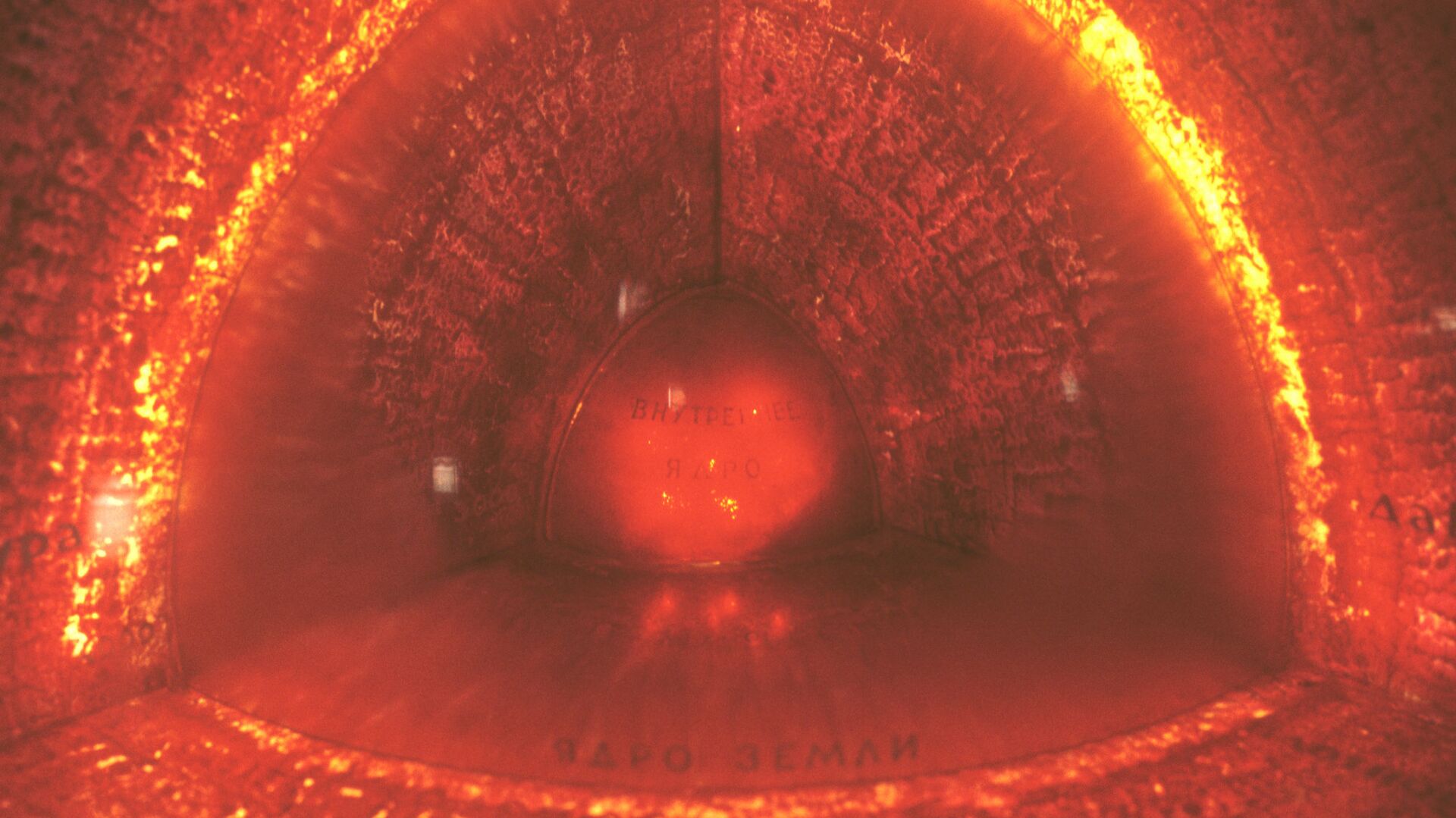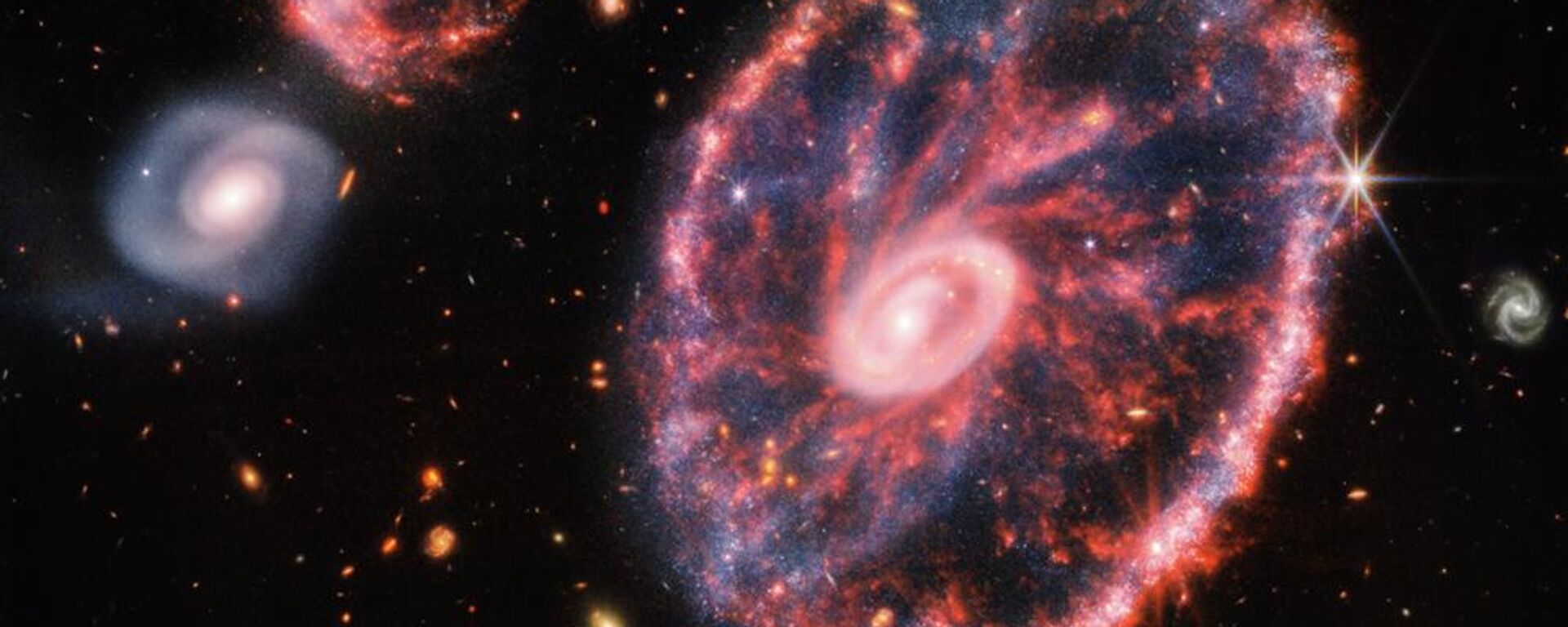https://sputnikglobe.com/20231028/earths-leaky-core-unveils-new-discoveries-study-finds-1114557192.html
Earth's Leaky Core Unveils New Discoveries, Study Finds
Earth's Leaky Core Unveils New Discoveries, Study Finds
Sputnik International
A new study reinforces long-held scientific views about our planet's inception and development. This has given insights about how elements were preserved in Earth.
2023-10-28T16:25+0000
2023-10-28T16:25+0000
2023-10-28T16:25+0000
beyond politics
science & tech
society
newsfeed
earth
canada
nunavut
woods hole oceanographic institution
university of edinburgh
nasa
https://cdn1.img.sputnikglobe.com/img/103469/19/1034691971_0:682:2004:1809_1920x0_80_0_0_a15780a21cd3fc2c8739f504a7166941.jpg
Researchers studying volcanic formations on Baffin Island, Canada have uncovered an unusually high concentration of helium-3 (3He). This finding supports the theory that this rare helium variant has emanated from Earth's core for millennia.Alongside this, helium-4 (4He) was detected in the same area. While helium-4 is abundant on Earth, its kin, helium-3, is more common in extraterrestrial environments.Forrest Horton, an associate scientist at Woods Hole Oceanographic Institution, revealed to media that “3He is rare in Earth because it has not been produced in or added to the planet in significant quantities and it is lost to space…As Earth’s rocky portion stirs and convects like hot water on a stovetop, material ascends, cools, and sinks. During the cooling stage, helium is lost to the atmosphere and then to space.”Baffin Island: Goldmine of Scientific DiscoveriesBaffin Island, situated in Nunavut, stands as Canada's largest island and ranks fifth in size globally. During her 2003 doctoral studies at the University of Edinburgh, Solveigh Lass-Evans identified an intriguing ratio of helium-3 to helium-4 in the island's volcanic rocks. Her discoveries were later detailed in the journal Nature.The composition of a planet reflects its elemental origins, and helium-3 leaks from Earth's core suggest it formed from a solar nebula triggered by a nearby supernova.In 2018, Horton and his team studied ancient lava on Baffin Island to explore rocks that might reveal information about Earth's core and mantle, the solid layer beneath its surface. The research team found that Arctic rocks contained higher levels of helium-3 and helium-4 than previously reported, with about 10 million helium-3 atoms per gram of olivine crystals, indicating that gases from the solar nebula during the formation of the solar system might be better preserved in Earth than initially believed.Uncovering Earth's PastHow did helium-3 become a component of Baffin Island’s rocks? One theory suggests the genesis of the universe — the Big Bang — as the pivotal moment when vast quantities of hydrogen and helium were dispersed, eventually shaping galaxies.Researchers posit that our solar system took shape around 4.5 billion years ago from a solar nebula. In the aftermath of a supernova, the debris converged into a rotating disk, which, as NASA suggests, eventually birthed our Sun and its orbiting planets.Helium is believed to have been trapped in Earth's core during our planet's early formation, turning it into a noble gas haven. As helium-3 seeped out, it journeyed upward via magma plumes in the mantle, culminating in eruptions on Baffin Island.Is Helium Hazardous?Recent studies support the theory that helium-3 has been seeping from Earth's core, though scientists remain uncertain about the inception of this phenomenon.Horton explained that helium's leakage from Earth's core poses no threat to the planet or humans, given the noble gas's inert nature. Additionally, he shared that the researchers are keen to explore if the core holds other light elements, possibly explaining the unexpected density of Earth's outer core.
https://sputnikglobe.com/20230706/webb-telescope-finds-sign-ancient-galaxies-were-seeded-with-supernova-space-dust-1111698428.html
https://sputnikglobe.com/20190808/big-bang-theory-questioned-as-dark-matter-may-have-existed-before-creation-of-universe-1076503278.html
earth
canada
nunavut
Sputnik International
feedback@sputniknews.com
+74956456601
MIA „Rossiya Segodnya“
2023
Chimauchem Nwosu
https://cdn1.img.sputnikglobe.com/img/07e7/09/01/1113046371_0:99:1536:1635_100x100_80_0_0_9c5c627283eca931c39fe4852bbb301c.jpg
Chimauchem Nwosu
https://cdn1.img.sputnikglobe.com/img/07e7/09/01/1113046371_0:99:1536:1635_100x100_80_0_0_9c5c627283eca931c39fe4852bbb301c.jpg
News
en_EN
Sputnik International
feedback@sputniknews.com
+74956456601
MIA „Rossiya Segodnya“
Sputnik International
feedback@sputniknews.com
+74956456601
MIA „Rossiya Segodnya“
Chimauchem Nwosu
https://cdn1.img.sputnikglobe.com/img/07e7/09/01/1113046371_0:99:1536:1635_100x100_80_0_0_9c5c627283eca931c39fe4852bbb301c.jpg
volcanic formations, baffin island, canada, helium-3 (3he), helium-4 (4he), earth's core, extraterrestrial environments, forrest horton, woods hole oceanographic institution, atmosphere, space, nunavut, university of edinburgh, solveigh lass-evans, journal nature, solar nebula, supernova, elemental origins, ancient lava, olivine crystals, big bang, hydrogen, galaxies, solar system, rotating disk, nasa, magma plumes, mantle, eruptions, noble gas, earth's formation, earth's past, helium leakage, earth's outer core.
volcanic formations, baffin island, canada, helium-3 (3he), helium-4 (4he), earth's core, extraterrestrial environments, forrest horton, woods hole oceanographic institution, atmosphere, space, nunavut, university of edinburgh, solveigh lass-evans, journal nature, solar nebula, supernova, elemental origins, ancient lava, olivine crystals, big bang, hydrogen, galaxies, solar system, rotating disk, nasa, magma plumes, mantle, eruptions, noble gas, earth's formation, earth's past, helium leakage, earth's outer core.
Earth's Leaky Core Unveils New Discoveries, Study Finds
A new study has reinforced long-held scientific views about our planet's inception and development. This has given insights about how elements were preserved in Earth.
Researchers studying volcanic formations on Baffin Island, Canada have uncovered an unusually high concentration of helium-3 (3He). This finding supports the theory that this rare
helium variant has emanated from Earth's core for millennia.
Alongside this, helium-4 (4He) was detected in the same area. While helium-4 is abundant on Earth, its kin, helium-3, is more common in extraterrestrial environments.
Helium, identified by the symbol He and with an atomic number of 2, is the premier member of the noble gas family on the periodic table. It is an inert, monatomic gas, devoid of color, odor, or taste.
Forrest Horton, an associate scientist at Woods Hole Oceanographic Institution, revealed to media that “3He is rare in Earth because it has not been produced in or added to the planet in significant quantities and it is lost to space…As Earth’s rocky portion stirs and convects like hot water on a stovetop, material ascends, cools, and sinks. During the cooling stage, helium is lost to the atmosphere and then to space.”
Baffin Island: Goldmine of Scientific Discoveries
Baffin Island, situated in Nunavut, stands as Canada's largest island and ranks fifth in size globally. During her 2003 doctoral studies at the University of Edinburgh, Solveigh Lass-Evans identified an intriguing ratio of helium-3 to helium-4 in the island's volcanic rocks. Her discoveries were later detailed in the journal Nature.
The composition of a planet reflects its elemental origins, and helium-3 leaks from Earth's core suggest it formed from a solar nebula triggered by a nearby supernova.
Solar nebula is the term used to describe the primordial cloud of gas and dust from which our solar system formed.
A supernova represents the intense and radiant outburst of a star. This phenomenon unfolds either in the concluding phases of a massive star's life or when a white dwarf (a medium-sized star uses up its fuel and loses its outer layers) undergoes uncontrolled nuclear fusion.
In 2018, Horton and his team studied ancient lava on Baffin Island to explore rocks that might reveal information about Earth's core and mantle, the solid layer beneath its surface. The research team found that Arctic rocks contained higher levels of helium-3 and helium-4 than previously reported, with about 10 million helium-3 atoms per gram of olivine crystals, indicating that gases from the solar nebula during the formation of the solar system might be better preserved in Earth than initially believed.
How did helium-3 become a component of Baffin Island’s rocks? One theory suggests the genesis of the universe — the Big Bang — as the pivotal moment when vast quantities of hydrogen and helium were dispersed, eventually shaping galaxies.
Researchers posit that our solar system took shape around 4.5 billion years ago from a solar nebula. In the aftermath of a supernova, the debris converged into a rotating disk, which, as NASA suggests, eventually birthed our Sun and its orbiting planets.
Helium is believed to have been trapped in Earth's core during our planet's early formation, turning it into a noble gas haven. As helium-3 seeped out, it journeyed upward via magma plumes in the mantle, culminating in eruptions on Baffin Island.
Recent studies support the theory that helium-3 has been seeping from Earth's core, though scientists remain uncertain about the inception of this phenomenon.
Horton explained that helium's leakage from Earth's core poses no threat to the planet or humans, given the noble gas's inert nature. Additionally, he shared that the researchers are keen to explore if the core holds other light elements, possibly explaining the unexpected density of Earth's outer core.





